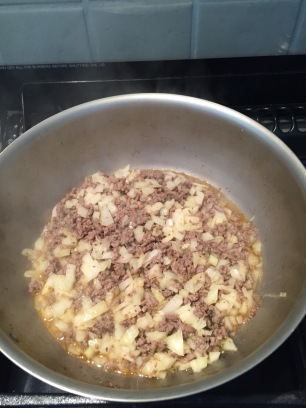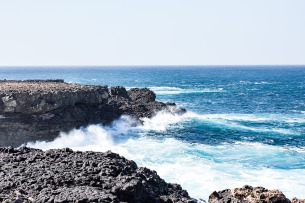Bolivia is the largest landlocked country in the Americas with the Andean mountain range taking up one third of its territory. Bolivia is named after Simón Bolívar, a Venezuelan military and political leader who played a key role in the independence of Colombia, Venezuela, Ecuador, Peru, Panama and Bolivia. He was also officially the first president of Bolivia. Bolivia wasn’t always a landlocked country. It lost 420 miles of Pacific Ocean coastline to Chile in the War of the Pacific and it still maintains a standing navy in preparation for the day it reclaims it back.
A few facts:
Bolivia is the main exporter of Brazil nuts, producing 70% of the world’s supply
La Paz, Bolivia, was the first South American city to get an electricity supply and it was powered by llama dung
North Yungas Road, Bolivia, also known as the “Road of Death”, built by Paraguayan prisoners in the 1930s, is often cited as the most dangerous road in the world and has claimed thousands of lives
At 3,650m above sea level, La Paz is unofficially the highest capital city in the world (the official capital is Sucre but the seat of government is in La Paz)
The Guembe Biocenter in Santa Cruz, Bolivia is home to the world’s largest butterfly sanctuary
One of Bolivia’s oldest silver mines Cerro Rico (Rich Hill), has claimed the lives of an estimated 8 million people in the past 500 years. It is known as the “Mountain that eats men” and is still mined with picks and shovels today.
The traditional staples of Bolivian cuisine are corn, potatoes, and beans. These ingredients have been combined with a number of staples brought by the Spanish, such as rice, wheat, beef, pork, and chicken. Some recipes I considered were Picante de pollo (Spicy Chicken), Silpancho (Thin Sliced Breaded Beef), Chanka de Pollo (Incan Chicken Soup), Arroz con Queso (Rice with Cheese), Mondongo (Pork or Beef Stew), Bunuelos (sweet or savoury fried pastry), Pastel de Choclo (Corn Quiche) and Choripan (chorizo sandwich). However I opted for a very popular snack in Bolivia – Salteñas (Baked savoury pastry). It was quite a tricky recipe with a number of steps, and unfortunately the liquid oozed out of the pastry during the cooking which made it rather soggy. Also we found the flavour a little too sweet for our savoury loving palates!
Rating: 5/10
Makes 3 large or 4 medium Salteñas
Prep time: 45 mins + cooling time
Cook time: 15 – 25 minutes
For the filling
150g cooked chicken, chopped
1 small potato
1 spring onion
1/2 onion
1/8 cup frozen peas
1/4 tsp cumin
1/4 tsp oregano
1/4 tsp salt
Pepper to taste
1 tbsp sugar
dash vinegar
1/8 cup butter
1/2 tbsp chopped parsley
2 cups chicken stock
1/2 packet of gelatin
For the pastry
4 cups flour
1/2 cup sugar
1/2 tsp salt
2 eggs
1/2 cup butter
about 1 cup of warm water
Dice the potato and add it to a pot of boiling water and cook for about 5 minutes, you don’t want the potatoes to be soft or they will fall apart in the broth, they will still cook a bit longer once they are added to the rest of the ingredients. After 5 minutes, drain the potatoes and set aside
Melt the butter in a pan, add the spices (cumin, oregano, salt and pepper) and cook for 5 minutes
Add the onion and spring onion and cook for a few minutes
Add the vinegar, sugar, parsley, potatoes and green peas and mix everything together well, add the chicken and the chicken broth as well and let it cook all together over medium heat for 5 minutes until the mixture is heated throughout
Add the gelatin to the mixture and then transfer to a large bowl and allow to cool completely in the fridge
Alternatively you can pour 3 individual portions in to plastic bags sat inside ramekins in the freezer, as this will make it easier to place into the pastry. Only remove them from the freezer once fully frozen
To make the pastry
In a large bowl mix together the flour, sugar and salt. In a separate bowl Lightly beat the egg and in a small saucepan melt the butter
Add all this to the flour mix with some warm water (approx 1 cup) and mix well until it forms a dough
Let the dough rest (covered in a towel so that it does not dry out) for about 10 minutes
Afterwards, divide the dough into smaller pieces and roll out, flouring as needed, into approximately 15cm diameter circles around a 1/4 cm thick
Take a frozen mold of saltena filling from the freezer or a large scoop of the gelatine set filling and place it in the middle of the dough
Wet the edges of the pastry and close together sealing the filling inside well, pinching and twisting the edges to ensure a strong seal. This is a very important step as how well you close the saltenas will determine whether or not they open in the oven later when you are baking them
Add the finished salteñas to a parchment lined baking sheet
Preheat your oven to 240C degrees, line a baking sheet with tinfoil, and grease with non stick spray
Once the oven is at its maximum temperature, add the saltenas to the baking sheet, brush with a beaten egg (for shine) and place in the oven until the salteñas are browned (approx 15 minutes) if the tops are browning too quickly, place another sheet of tinfoil overtop and continue cooking. You want to be sure that the filling is completely heated through
Remove from the oven and let sit for 5 minutes before tucking in

































